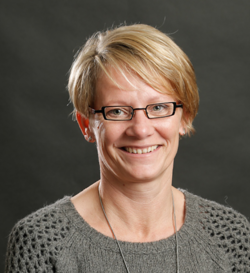The Role of Plasmin in Thrombotic Thrombocytopenic Purpura (TTP)

Prof. Dr. Karen Vanhoolrelbeke
Laboratory for Thrombosis Research
KU Leuven Kulak.
"The study funded by the foundation aims at investigating the role of the enzyme plasmin in the pathophysiology of TTP. As this enzyme is able to cleave von Willebrand factor, the protein causing problems in TTP, we think that it plays a role in the regulation of acute episodes."
How Prof. Dr. Karen Vanhoolrelbeke became interested in TTP research:
"I started my research career in the field of thrombosis and haemostasis with a special focus on von Willebrand factor (VWF) and platelets. When the VWF cleaving protease ADAMTS13 was discovered, my research line switched to unraveling the function of this protease, developing animal models for TTP, investigating novel therapies to treat TTP and developing novel assays to better diagnose TTP. With these research lines, we hope to contribute to improving the quality of life of TTP patients."
How Prof. Dr. Karen Vanhoolrelbeke believes this research will impact individuals living with or impacted by TTP:
"The results of our study will hopefully bring new insights into our knowledge on TTP. When we understand the disease better, and know the role of different key-players in the presentation of the disease, we can design novel therapeutic strategies for TTP patients."
Comments from Prof. Dr. Karen Vanhoolrelbeke to donors:
"We would like to thank the donors for their generous gifts and their involvement in the foundation. Due to their support, we are able to perform our research and step by step come towards better treatment and long-term outcome for those patients diagnosed with TTP."
Research Outcome Summary:
"In TTP patients, the blood is unusually sticky which results in spontaneous clot formation in blood vessels throughout the body. The clots block the blood flow in the vessels and organs get damaged because they do not receive enough oxygen and nutrients. The spontaneous clot formation occurs because the blood enzyme ADAMTS13 (a scissor) is not functional and cannot cut the sticky protein von Willebrand factor (VWF). As a consequence, the sticky protein can spontaneously bind platelets (cells in the blood) and clots are formed. In the current treatment of TTP, active ADAMTS13 to cut VWF is provided via plasma exchange or infusion. An alternative therapy would be to digest, and hence remove, the clot because this will quickly restore the blood flow and the organ damage. Such a therapy would be ideal to use when patients enter the intensive care unit during an acute phase. It should be advantageous if one has to wait for the plasma exchange and it should reduce the number of plasma exchanges. We previously showed that another scissor, plasmin, can digest VWF in these clots and that administration of plasmin could be used to treat TTP in preclinical animals. We now investigated if stimulation of plasmin in the animals could rescue an acute TTP episode (instead of extra injection of plasmin). Interestingly, we could show that when we allowed plasmin amplification in the animals, TTP could be rescued. Hence our data further support the use of plasmin as an additional therapy for TTP."
(Change of Principle Investigator 2017.01. Previously Dr. Claudia Tersteeg)
